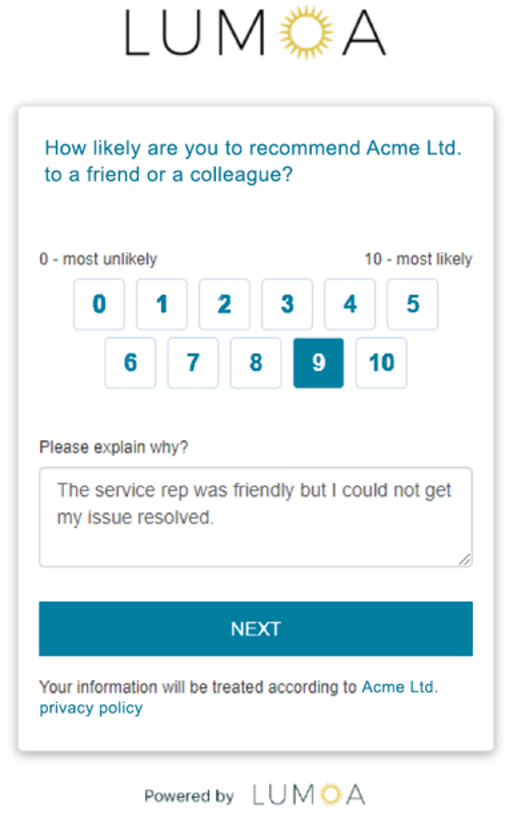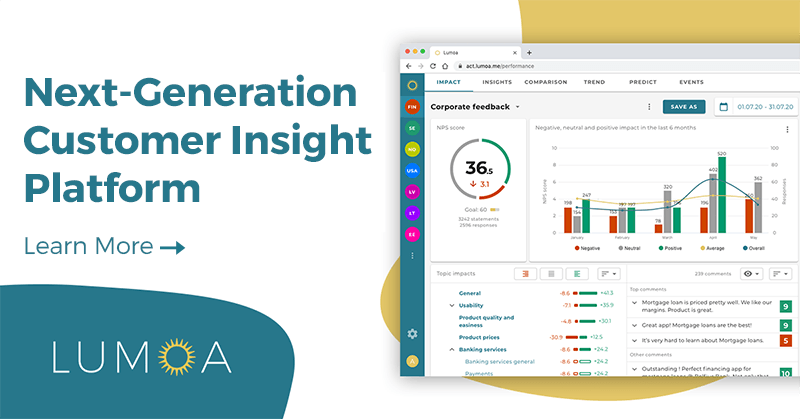Must-Have Customer Experience Management Skills for CX Professionals

Last updated on October 17, 2024
Customer Experience is evolving. The barrier to entry is lower than ever, and new competitors are entering the market every day. To keep pace and make sure your products deliver value, you need to be continually listening for customer input. Sharpening your customer experience skills will help you stay ahead of your competitors.
The Next Generation of CEM
Today, product and service changes are typically driven by interviewing key clients, running surveys, or hosting customer advisory meetings. While useful, these activities not only miss a tonne of valuable detail, but they are also no longer enough to keep up with increasingly fast release cycles and changing customer sentiment.
The most successful companies require next-generation customer experience management tools and strategies to analyze all data points in real-time and provide up-to-date, actionable insights faster across all teams in your organization. Help your organization amaze and delight your customers by strengthening these skills.
6 Customer Experience Skills That You Should Know About
1. Measure CX without Surveys
Online and email surveys, at best, have a response rate of 30%. This is a small sample size based on a static point in time and is heavily influenced by what you ask and how you structure your survey.
The best type of voice of customer (VOC) feedback is unfiltered, real-time, represented across the customer journey, and measured across all data points and channels. Next-generation CEM platforms allow you to listen in to social media posts, track that exasperated tone during an onboarding call, and analyze the chat content of a support conversation. All of these contain valuable insights into your customer experience.
With this data, you can build a vivid image across departments, different customer industries, stages of implementation, etc. Not only is it an advantage to your company, but the customer doesn’t have to expend any extra effort. They are already talking to and about you; all you need to do is listen, analyze, and act!
2. Shorten your Survey
Putting less focus on surveys, as discussed above, is a good decision. But surveys do have a place in your Customer Experience Management program. It is more effective to use surveys with fewer questions and more open-ended responses such that your responders can give maximum insight in a smaller amount of time.
Survey length is a significant contributor to response rates and the amount of thought given to answers. SurveyMonkey found that “respondents take more time per question when responding to shorter surveys compared to longer surveys.”
Yes, multiple-choice and Likert scale questions are easier to turn into fancy graphs for presentations, but they don’t allow the customer to express their genuine feedback. You will reap more benefits from using text analytics on your open-ended responses than from collecting numerical, in-actionable scores.

Next-generation customer experience management uses data more effectively to provide high-quality products and services. Long surveys with few open-ended questions do not help you meet that goal.
Recommended reading: Survey Design Best Practices
3. Re-Align the Function of Customer Insights
Customer experience thought leader Shep Hyken says, “Customer service is not a department. It’s a philosophy to be embraced by every member of an organization, from the CEO to the most recently hired.”
He is right. Customer insights teams should focus on coaching everyone in your organization on finding the latest analytics and knowing how to action them. They need to ensure that everyone is working together towards improving CX metrics and aligned on the strategic goals for your business.
To drive the most value from customer insights, everyone needs to have access to them and use them to inform their decision-making.
Examples:
- Planning a new feature? Search for customers’ use cases. Prioritizing a defect list?
- Investigate in real-time what causes the most concern among your customers.
Re-align the function of customer insights towards spending their time making analytics clear and available to all stakeholders. This is one of the most challenging customer experience management skills to master.
To succeed, it is imperative that buy-in starts at the top and your organization recognizes the value of customer insights throughout.
4. Showing the Value of CX
Customer Experience Management can be one of the most impactful investments you can make. PWC found that consumers are willing to pay 16% more for products and services that offer a great CX. Not only that, but customers recognize when they are working with companies that focus on CX. HubSpot found that companies with a customer-centric mentality are 60% more profitable. Honing your customer experience management skills will grow your business.
Illustrating the return on investment (ROI) of your CX program is no different than showing the value of any other program in your business. You recognize a gap, put in place a process or tooling change to address it, and measure the KPIs to see if there is an improvement.
Next-generation Customer Experience Management tools, like Lumoa, make it easier to directly compare your customers’ feedback and what you prioritize within your business.
It allows you to:
- Find the gaps easier through a deep analysis of all of your communication with customers across the business
- Recognize the most pressing customer priorities in real-time
- Assess the sentiment changes post improvement.
Connecting metrics such as CSAT and NPS to revenue is complicated. Let tools help you prove the value of your CX investment.
Recommended Reading: Business Value and ROI of Customer Experience: The Step-by-Step Guide
5. Integrate VOC with other Systems
Voice of Customer (VOC) feedback must be deeply embedded into decision-making processes. Customer feedback should be used to help drive a seamless, low-effort experience for your product and services. To achieve this, integrate VOC into common tools you use to make customer-impacting decisions. Here are some examples:
Automated Prioritization
Every organization has a ticket type that they need to act on fast. With a next-generation customer experience management tool, you can identify these urgent tickets, flag them within your ticketing system, and get human eyes on them faster. Using this method, Lumoa customer Simple Finance reduced resolution time by 90%, leading to a CSAT increase of 20%.
Flag Negative Feedback
A fundamental way to build trust and relationships with your customers is to listen to their feedback and action it. That is incredibly difficult to do since feedback can come from all sorts of different places. Ticket management systems, product management tools, social media, onboarding phone calls, etc., all have different places and formats to store data.
By integrating VOC into all of these systems, your CEM tool can find the negative feedback and create a ticket for a response by your support or success team. This integration ensures you hear your customers’ voices, and you have an opportunity to quickly apologize or correct the situation.
These are just two examples of deep integration of VOC. From solving tickets to automating workflows, integration will easily help you recognize issues faster and create better customer experiences.
6. Use a Next-generation CEM Platform
Legacy CEM tools are hard to implement, require training and dedicated administration, present results that are hard to understand or not accessible to all stakeholders, and are expensive. They were designed and developed before the latest advancements in AI and heavily focused on surveys. As we have learned, there is so much more to CEM than surveys. The data you collect must be both integrated with your other data sources and available across your business.
Modern customer experience management platforms, such as Lumoa, were developed with all of these things in mind. Everyone across the company can access insights relevant to them in a readable and actionable way.
The tool is easy to use, fast to implement, and not priced based on users. The next-generation trend is to combine the power of AI with human intelligence and make customer feedback immediately understandable and a strategic initiative within your business.
Join the CX Evolution
Customer experience is a differentiator between competitors. Consumers have more choice than ever, and budgets are always tight. To succeed in this landscape, you must offer the highest quality service and deliver relevant products and services.
By ramping up your next-generation customer experience skills with these tips, you will invest in the right areas, pivot faster to meet customer needs, and save time and money doing it. Just as you would write a better resume to stand out in a competitive job market, focus on enhancing your customer experience strategies to amaze your customers at every step of their journey by predicting what they want and consistently delivering.
